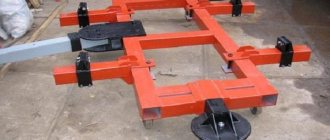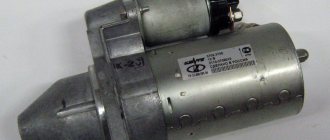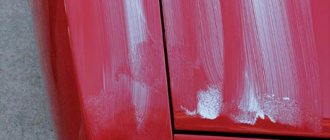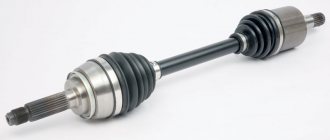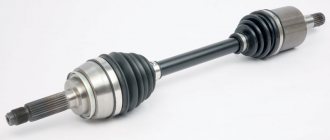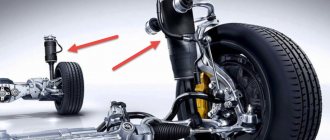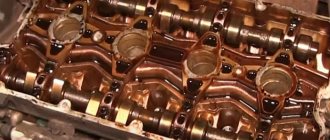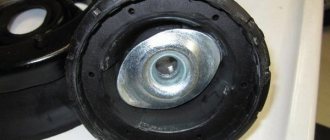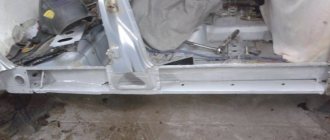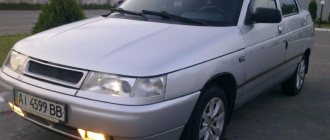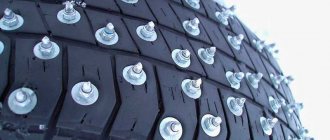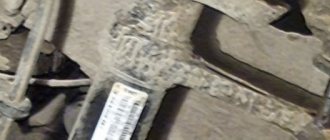Every year there are more and more cars on the roads of our country. And not all cities are ready for such an influx of vehicles.
The road junctions there are not prepared for such a development of events; in addition, more and more inexperienced drivers are appearing on the roads, which leads to the creation of emergency situations. And as a result, a large number of accidents.
Most of them end with damage to the body of one or even more cars. After such situations, these cars need body repairs. And it is impossible to perform it efficiently without special equipment.
One of the most commonly used options for such equipment is an automobile slipway.
What is a bench for body repair?
If you look at the photo of a building for body repair, it is easy to see that most often it represents the platform on which the car is placed.
The purpose of this device is to create pressure of the required amount on one or another part of the car body to bring its geometry to its original state.
Most auto repair shops have one if they do auto body repair, and some motorists even buy one for their own garage.
Accordingly, the price of a slipway for body repair largely depends on the type of device.
Let's look at the main types of slipways and discuss their advantages and disadvantages.
The importance of controlling and maintaining body geometry
So much has been said about the fact that the stocks are capable of restoring body geometry. At the same time, not everyone fully understands why this is done and why the machine cannot be operated with any deviations relative to its factory geometry.
Body geometry or body geometry refers to the exact dimensions of a vehicle, specified at the production stage. Key parameters include:
- front track width,
- rear track width,
- wheelbase length,
- length of the side members,
- distance between side members.
The body consists of a large number of parts that form a supporting system. During normal use, parts begin to shift slightly. This is due to the less than ideal condition of the road surface, vibrations, collisions with bumps and holes, sudden forced braking, etc. A process of natural wear and tear occurs, which can be characterized as metal fatigue.
But under normal conditions this process proceeds very slowly. But there are situations when the shift occurs suddenly and sharply. This is possible in case of an accident, serious mechanical damage, when the car falls into a large hole at high speed, or in collisions with obstacles. As a result, the geometry is violated, that is, the car no longer meets its factory standards.
In such situations, high-quality restoration of the modified geometry of the car body helps. It can be restored on the slipway. This type of repair allows you to restore the car after accidents and continue normal operation.
If you ignore the need for repairs, this may manifest itself in the form of the following problems:
- doors don't close well,
- The hood and trunk do not close tightly,
- the car behaves unstably at high speed,
- the car skids even though the steering wheel is straight,
- the car stops obeying the driver,
- vibration appears
- the metal gradually deteriorates,
- the load increases,
- body elements and associated components wear out,
- fastenings are destroyed.
How dangerous all this is, each of you can guess for yourself.
Therefore, it is important to check the geometry not only in the event of an accident and various types of severe damage, but also after a fairly long service life of the car
Some car owners, in order to prevent and prevent the development of problems, carry out diagnostics of the condition of the body at least once every 2 years. This is especially true for those who are forced to travel on bad roads, which contribute to rapid wear of body elements and accelerate metal fatigue.
Body stocks are objectively sometimes irreplaceable equipment in matters of vehicle repair. They help in restoration and extend the life of the car.
To what extent such an installation is needed at home is an extremely controversial issue. But every auto repair shop that provides body repair services is simply obliged to have a professional and high-quality slipway at its disposal.
What types of slipways are there?
Before answering the question: where to buy a slipway for body repair, let’s consider the purpose of various slipways for the correct choice of model.
If we talk about the types of stocks, they can be divided into two large categories:
- electromechanical programmable slipways
- manual mechanical stocks.
Each of these categories has its own subtypes, let’s look at the most popular of them.
Platform slipway
The basis of this device is a platform on which the car body is mounted. Using special clamps, you can apply force to a specific part of the body. This is the most common type of jig used in most auto repair shops.
With its help, you can make both minor body repairs and significant damage, including correction of the frame geometry.
The main advantage is the ability to install in any room with sufficient space. The main disadvantage of this design is its cost, but it is the most versatile slipway.
Varieties
The fact of using one or another type of slipway plays a certain role in the quality and characteristics of restoration work.
They are distinguished depending on the design features. Moreover, all of them can be used to perform the assigned tasks of restoring the geometry of automobile bodies.
As a result, the stocks can be divided into the following categories:
- floor;
- rolling;
- frame;
- platform.
To understand the difference between the presented equipment, each slipway that pulls the machine needs to be understood separately.
Roll-up
Roll-on models are designed primarily for carrying out relatively simple repair and restoration activities, when it is not possible to use powerful, full-fledged equipment.
But this fact does not at all prevent rolling stocks from being very common. This is explained by the fact that such stands have wide functionality. Their strengths include the following:
- They are designed to work with different types of vehicles. Therefore, one stand can serve various cars. There are rolling stands that have special elements in their arsenal that allow you to fix the car without necessarily flanging the thresholds.
- They have compact dimensions, which allows the use of the rolling unit in confined spaces. Similar models are found even in ordinary garages. Their small dimensions provide a certain advantage over competitors.
- Wide range of settings. This feature allows for precise pre-tuning. That is, the machine adapts to a specific body type when restoring the car’s geometry.
- Special clamps for fixing the flanging of car sills. They have no analogues, and therefore act as a powerful argument in favor of rolling models.
- If necessary or desired, rolling stocks can be additionally equipped with a tithe hydraulic system.
But in many ways, their advantages and merits do not always justify themselves. These slipways are not as universal as they might initially seem.
If we are talking about severe damage and a serious change in geometry, the rolling stand will not be able to cope with the restoration. It is important to use it in the process of repairing side members, panels, racks and other similar components.
But still, rolling models can be called effective, versatile, affordable and reliable. Many car services rightly invest money in such equipment, since this purchase is fully justified.
Floor
Floor-standing models of building stocks differ in that they provide for the installation of special rails, racks, anchors and fasteners into the floor. They are used as the basis for placing and fixing the vehicle being repaired.
The key advantages of floor-mounted straightening stands are the fact of their relative affordability, ease of installation and the absence of difficulties when placing the machine. Although the design is floor-mounted, in fact it does not take up much space. This allows you to intelligently use the available space in a garage or small auto repair shop.
As needed, when there is no need for a slipway, the structure mounted in the floor can be used for other tasks and purposes. In this case, the rails will not interfere at all, and sometimes they can even help in the implementation of certain works.
The only more or less significant drawback is the difficulty of taking the necessary measurements during operation. But in general, floor stands are a worthy alternative and a serious competitor to rolling analogues.
Frame
This slipway is characterized by a more complex design and structure. But it is precisely this that many body repair specialists prefer to use when eliminating relatively minor defects.
The design itself occupies a small space. Basically, frame models are installed on scissor car lifts. As a result, the machine is at an adjustable height and can be easily extended in the desired directions.
https://www.youtube.com/watch?v=OeH5O4hJ8hs
When compared with the same platform stocks, which we have yet to consider, the frame analogues are structurally more complex and consist of a larger number of components. When choosing a slipway of this type, it is recommended to give preference to devices additionally equipped with car lifts. This will reduce the time spent on repairs, and will also provide an opportunity to save on workshop space.
Platform
If you do not take into account homemade slipways, the platform type of device is the last among the existing varieties. But this type of equipment is positioned as the most expensive, productive and efficient.
Platform straightening stands allow you to cope with serious mechanical damage on cars with different body types, including even huge frame SUVs.
All platform structures are supplied in a specific configuration, which includes rails and an exit bridge. This is the base on which the vehicle drives or is tightened with the help of auxiliary devices for subsequent fixation with special high-strength fasteners.
Rolling slipway
As the name suggests: a rolling slipway for body repairs, the main feature of the device is a mobile platform on which the body is mounted and which can move along the slipway.
Fastening of the extended body parts occurs at the flanging of the body sills. With the help of such a device, it is easy to repair body elements such as racks, side members or panels. It will not be possible to carry out more complex repairs on it.
The advantages include the relatively low cost and small area required for placement.
Conclusion
One of the main features of the slipway is the preservation of the geometry of the body. Why is this necessary? Primarily due to a significant displacement of the front or rear track, wheelbase, etc. A sudden breakdown may occur, which, in turn, leads to dangerous consequences. During long-term operation of any car, a slight displacement still occurs, but this cannot be compared with changes in the geometry of the body after an accident or other major mechanical damage.
Usually this type of repair is done before selling the car in order to give it a marketable appearance or if the owner himself wants it. The best option here would be to entrust the repair to professionals, but this will require serious financial investments, since this procedure is the most expensive element of bringing the car into a salable condition.
Frame slipway
Frame structures are more efficient than rolling stocks. Moreover, it allows you to most firmly fix the car on the frame, and then pull it in a variety of directions.
Particularly popular are frame stocks with lifts, which save space in the workshop, which is often not enough.
Floor slipway
The floor stand for body repair is in many ways similar to the rolling version of the stand, the only difference being that all its parts are mounted rigidly into the floor. It is quite cheap and can perform the same functions.
This is probably the most suitable type of device for building it yourself.
Homemade slipway
The first thing to start preparing for the construction of your own slipway is to decide on its tasks. Next, you need to create or find drawings of a slipway for DIY repairs. And only after that will it be possible to look for all the necessary materials and tools.
It should be remembered that the quality of materials will primarily affect the efficiency and quality of work, which means it is necessary to choose the best of them.
DIY making
Realizing that the slipway effectively replaces physical strength in stretching, Russian body repair enthusiasts came up with a homemade version of it.
The operating principle of standard slipway equipment is clear: a car is mounted on a frame. The main thing is reliable fixation, because the positive outcome of the case depends on it.
Work on a homemade slipway
High-quality slipway equipment is not cheap. Often for this reason, many hobbyists decide to make this machine with their own hands.
First of all, making a slipway at home involves calculating the necessary components. A drawing is made and the required supply of materials is calculated. The base of the slipway is a tetrahedron made of an iron profile with a section of 50x50 or 70x40. As for the length, 200 cm is considered optimal, and the width should be equal to the wheelbase of the car.
A stiffener made of a similar material – a metal profile – is welded in the middle of the platform. Then, as mentioned above, a calculation is carried out, and the amount of the required metal is ordered at a special base or found in another way.
Drawing of a homemade slipway
The slipway is also equipped with good hydraulics. In this case, a kit that can withstand a load of up to 10 tons is suitable.
Depending on what type of slipway it will be (mobile or stationary), it is equipped accordingly. A stationary slipway should not move, and therefore is not equipped with wheels. A mobile bench, on the contrary, in addition to wheels, must also be equipped with a device for storing the machine in a vertical position.
The assembly process is carried out using welding. This means that welding skills are required.
Homemade slipway
Here's what to do:
Assemble a rectangle from the profile, and then reinforce it in the middle with additional material.
- Heights are welded into the corners of the machine to prevent the car from possibly rolling off the slipway;
- Clamps are installed on the longitudinal sides of the frame;
A power rack is installed in the shape of the letter “L”, which can easily move and be secured anywhere in the frame.
All that remains is to paint the homemade machine, equip it with components for repair and start using it.
Video of a homemade body repair installation
